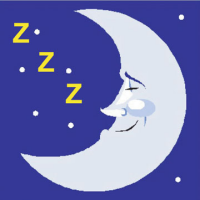Game Date: Apr 7th, 2064
Discussion Forum
Forum >> Discussions >> Player Assignment 
 |
|  |
| 
| Post ID | Date & Time | Game Date | Function |
|---|---|---|---|
| #19323 | 05/22/2015 4:31:46 pm | ||
|
Balbinjj Joined: 05/27/2014 Posts: 213 Appleton Foxes III.1 
| Reading from your thoughts. Maybe its right to assume then that their is a chance that a player called up, nearing to be called up in the system, will work. |
||
| #19327 | 05/22/2015 11:54:12 pm | ||
|
newtman Joined: 11/02/2013 Posts: 3343 Inactive 
| GreenYoshi, fair enough, I was perhaps overly harsh in my posts partly because I found it downright insulting that Balb thought that one observation would disprove the experience of multiple users. At least that's how I read the original post. If you want to run an experiment to try and disprove the current conventional wisdom go right ahead, but I will want to see the data and it would have to be repeatable to not be easily dismissed as an outlier. Not trying to be a jerk, just have seen some decent quality experiments run in these forums already and in order to overturn the established theory a certain level of quality is expected. | ||
| #19328 | 05/23/2015 6:34:55 am | ||
|
Seca Joined: 05/05/2014 Posts: 5198 Waterloo Dinosaurs Legends 
| This is basically what Dwindacatcher said, with some added Seca blah-blah-blah. Let: SIcap = max SI a player can reach SIt = SI available through training SIe = SI available through experience For some players, SIt + SIe > SIcap These guys can be brought up early. They will still cap out. For others, SIt + SIe < SIcap These guys are going to come up short no matter what the manager does. For others still, SIt + SIe ~= SIcap These players can turn out, but need to get good returns from both categories. The general advice has always been to follow recommendations. This maximizes SIt. This benefits players in the 2nd and 3rd groups, while not harming the 1st group. Inexperienced managers especially should follow this advice. More experienced managers may recognize players in the 1st group. If you feel you can do this, the recommendations become just that, and judgement plays a bigger role in when to bring players up. But it does require some care. Once you bring the player up and focus on SIe, it is hard to go back and get SIt. So if the player you thought was from group 1 is actually in group 2 or 3, he's going to come up short. The venerable Mr. Two Plums got interested in this topic a couple seasons ago. It appears he has been conducting an experiment. Will be interesting to see how it turns out. |
||
| #19329 | 05/23/2015 6:58:22 am | ||
|
Balbinjj Joined: 05/27/2014 Posts: 213 Appleton Foxes III.1 
| Thanks Seca |
||
| #19333 | 05/23/2015 8:35:05 am | ||
|
Seca Joined: 05/05/2014 Posts: 5198 Waterloo Dinosaurs Legends 
| I think the interesting question that parallels this discussion is - what criteria results in promotion (not just to the majors, but from level to level in the minors)? Rock777 and I have had some good conversations on the topic, and I think Rock777 tried to start a little research project about it. Personally, I wonder how "smart" the recommendations are. Are they based on a current skill vs. cap comparison? If a player in rookie ball reaches 50% (+- some random factor) of his SI, is that the cue to advance? Maybe instead it considers the player skill with the biggest gap between current and potential? If this were the case, I think you'd see fair uniformity in players getting promoted to the majors. I also think the recently added player ETAs would be easier to predict. An alternate idea is that after a certain period of time at a level (say 10 updates), there is a random chance of getting promoted to the next level. The random chance would increase with each subsequent update. This model more easily explains why some players promote to the majors quickly with a large gap between current and potential, while others dawdle along in the minors eventually reaching the majors with a small gap between current and potential. An off-shot of this random idea is that players are "born" with a certain amount of time (ie., player updates) at each level. (So not random, but predetermined). Consider a player from AA that gets promoted to the majors. He plays for a certain period of time and increases his SI through experience. His manager decides to send him back down to the minors. In every example I've seen, this player returns to AA despite being older and having more skill. This example suggests to me that advancement is a function of time (be it randomly decided or predetermined) rather than a function of current skill vs. potential. This relates to the current thread b/c managers who feel advancement is a function of current skill are very reticent to promote to the majors early, whereas those who see advancement as a function of time independent of skill are more comfortable promoting early. |
||
| #19335 | 05/23/2015 10:52:46 am | ||
|
GreenYoshi Joined: 07/26/2013 Posts: 61 Brookhaven Mustangs III.3 
| Newt- I respect the analysis and input from all the veterans in the community. All I'm saying is that I'm confident in my way and my players are doing fine. I'm not looking to establish my own favorable theory, but I will take better notes on the development of my players that I shuffle in and out so I can share my experience with "proof" in the future. Seca- Great analysis. Your theory on function of time seems to give a name to my strategy. I'll have to consider this information moving forward. Updated Saturday, May 23 2015 @ 10:55:06 am PDT |
||
| #19337 | 05/23/2015 12:44:00 pm | ||
|
MrTwoPlums Joined: 04/14/2012 Posts: 213 Inactive 
| Venerable? Nah, the doc says that should be cleared up by now... So far I've had no problems calling up and playing guys who are recommended AAA, but they've all been within Newt's projected range of being less than 30 points away from their peak. Next season I'll be calling up and trying to blitz some AA lefty pitchers who fall well outside that range. It will be interesting to see how they turn out, but they're so far behind that if I left them as is they'd never get anywhere near their peak. Nothing much to report on the Vargas experiment so far. He promoted from Rookie to A recommendation when he turned 18. I'm not sure how he'll progress going forward. There's another player I'm keeping an eye on. I'm kinda surprised that with all that experience, and his SI so high that he's still only recommended for A ball. But he was only recently put back down, so who knows how it will turn out for him. |
||
| #19364 | 05/24/2015 11:08:40 am | ||
|
Tiger504 Joined: 06/17/2014 Posts: 1314 Kalamazoo Bloody Tigers III.4 
| How firm do you guys feel about that 30 number? Would it be smaller for say a 11 pot hitter? | ||
| #19365 | 05/24/2015 12:11:29 pm | ||
|
raygen12 Joined: 04/04/2016 Posts: 52 Inactive 
| I am facing a decision similar to what you guys are talking about, I have a 15 pot SS at 102 SI, he is recommended to be in AAA, he is on his 5th season in the minors according to his experience. My best player in majors is unluckily also a shortstop at 102 SI ( I know I suck but this is my first year and I am in VI. 18). But the shortstop in the majors is playing 3B or DH because that's what the computer had him at. So do you guys think I should bring him up or wait for the game to suggest to bring him up? | ||
| #19366 | 05/24/2015 1:40:07 pm | ||
|
Haselrig Joined: 04/13/2014 Posts: 2790 Novi Doubledays III.4 
| Personally, I'd leave him down. He's a possible franchise player. I'd be very conservative with his development. | ||